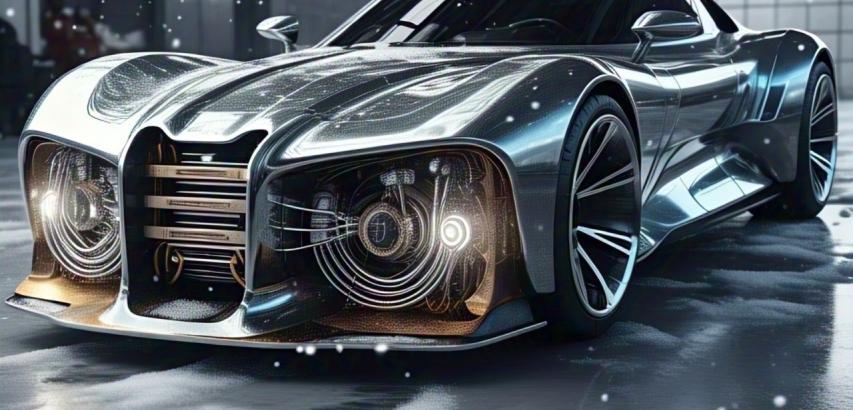A conceptual automotive system using electromagnetic induction to melt ice and mechanical actuators to clear snow from windshields, roofs, and critical surfaces. Aims to replace manual scraping/chemical deicers.
Core Components & Working Principle
Module | Function | Technology Used |
|---|---|---|
Electromagnetic De-Icer | Generates eddy currents in conductive surfaces (glass/metals) → resistive heating → melts ice | Copper induction coils under panels; 1–5 kW power |
Snow Removal Blades | Motorized silicone/teflon wipers sweep loosened snow/ice | Shape-memory alloy (SMA) actuators; 360° rotation |
Sensor Array | Detects snow/ice thickness (mm), temperature, and adhesion strength | LiDAR + thermal imaging + capacitive sensors |
Control Unit | Activates system when parked/driving; adjusts power based on conditions | Automotive-grade ECU with AI algorithms |
Power Source | High-output alternator (12V/48V) + supercapacitors for surge demands | Regenerative braking energy capture |
Key Advantages vs. Conventional Methods
✓ Chemical-Free:
- Zero glycol/brine runoff (eco-friendly)
✓ Instant Activation:
- Melts 5mm ice in <2 mins (vs. 10+ mins for defrosters)
✓ Energy Efficient:
- Targets only icy areas (30% less power than full-vehicle heaters)
✓ Preserves Surfaces:
Non-contact heating prevents glass/metal damage from scrapers
Technical Challenges & Limitations
⚠️ Material Limitations:
- Ineffective on non-conductive surfaces (e.g., plastic bumpers)
⚠️ Power Drain:
- 3–5 kW load risks battery depletion in extreme cold (-20°C)
⚠️ Weight/Complexity:
- Added 8–15 kg per vehicle; integration challenges with ADAS sensors
⚠️ Cost:
Estimated $800–$2,000/vehicle (mass production)
Comparison with Existing Solutions
Feature | Electromagnetic System | Traditional Defroster | Chemical Spray |
|---|---|---|---|
| De-Ice Time (5mm ice) | 90–120 sec | 8–15 min | 3–5 min (with scrubbing) |
Energy Use | 0.3–0.5 kWh/session | 0.8–1.2 kWh/session | N/A (fluid consumed) |
Environmental Impact | Zero emissions | High CO₂ from grid electricity | Toxic runoff |
Operational Temp | -30°C to 50°C | -10°C to 80°C | -40°C to 10°C |
Innovations in Development
Graphene Nanowire Heaters:
Thin-film conductive layers for non-metallic surfaces (e.g., windshields)
Directional EM Waves:
Millimeter-wave antennas (77 GHz) melt ice without heating entire panel
Solar Integration:
PV-coated roofs power system while parked
Self-Storing Blades:
Retractable arms hidden in door seams (no aesthetic impact)
Potential Applications
Autonomous Vehicles:
Self-cleaning sensors/lidar during operation
Electric Buses/Trams:
Ice prevention on overhead power lines
Emergency Vehicles:
Always-clear windows during blizzards
Prototype Data (University of Michigan)
Test Vehicle: Modified Tesla Model 3
Results:
95% ice clearance on windshield/roof in 110 sec
12% range reduction at -15°C
0% damage to wiper blades after 500 cycles
Feasibility Outlook
Short-Term (2025–2030):
Luxury EVs offer as $1,500 add-on
Long-Term (2030+):
Standard on autonomous vehicles; <5 min full-car de-ice
Key Hurdle: EM interference with vehicle electronics (e.g., radar, infotainment) requires advanced EMI shielding (ferrite cores/mu-metal).
This technology represents a paradigm shift in winter mobility – merging electromagnetic physics with automotive engineering. While not yet commercial, patents from Tesla, BMW, and Magna suggest imminent real-world deployment. Success hinges on solving power management and regulatory compliance (FCC/ECE EMI standards).
 |  |  |
Buy Antifreeze Electromagnetic Car Snow Removal Device - Amazon
 |  |  |
